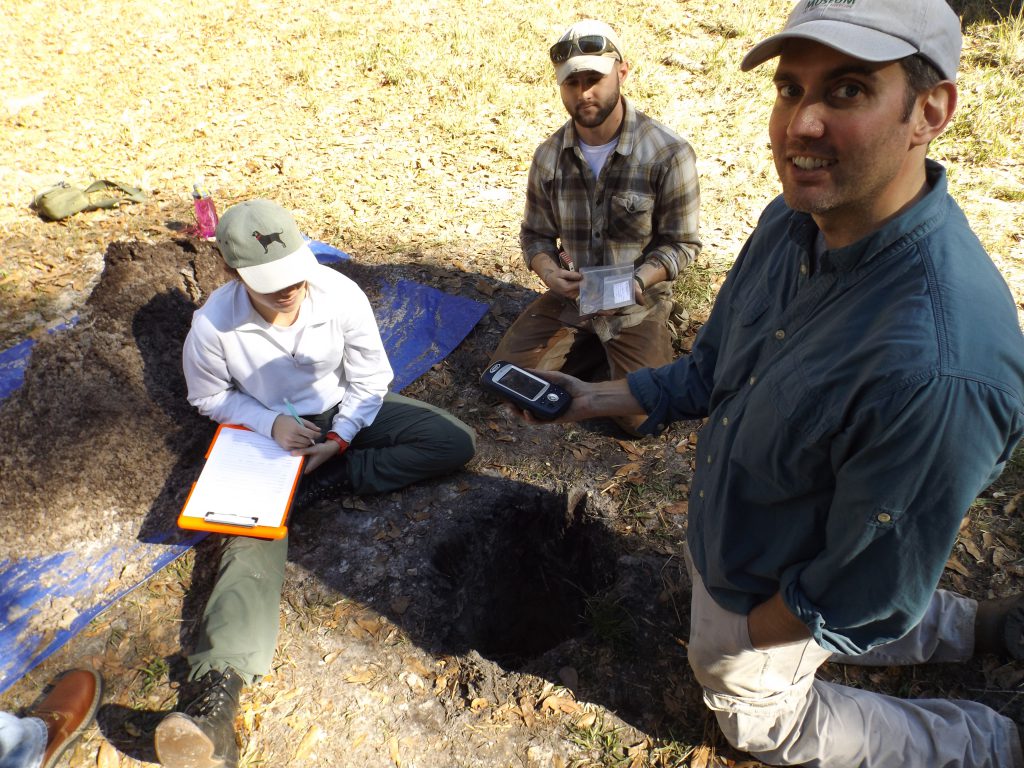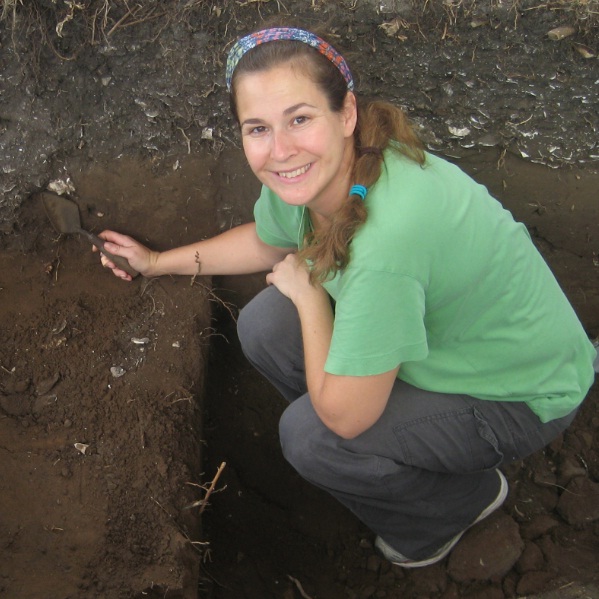Climate change threatens not only the future of Florida’s barrier islands, but all they hold about the past.
On barrier islands up and down the coast of Florida, untold truths and silent stories are buried in the sand. Truths about the Timucuan who fought to protect their land and people from Spanish conquistadores. Stories of the Apalachee as they played their favorite ball game. Prayers uttered by the Gullah Geechee when they were enslaved.
Florida’s barrier islands also witnessed Juan Ponce de León arrival on the peninsula he named La Florida 1513; Tristan de Luna y Arellano’s ill-fated settlement in Pensacola; great shipwrecks that hold evidence of Florida’s early role in global trade.
Barrier islands are history books that recorded many of Florida’s earliest, still-hidden stories. Archaeology is the gateway to those histories and stories, says Neill J. Wallis, associate curator for Florida archaeology at the Florida Museum of Natural History. Yet climate change threatens their discovery and preservation.

“Oral history only takes us so far,” Wallis says. “When that’s destroyed, or just taken by individuals who don’t share the information, then we all lose out on understanding what came before us.”
Wallis says that one of the biggest threats to barrier islands and the history they hold is sea rise driven by climate change. The northern Gulf Coast, he says, was around 200 kilometers seaward 15,000 years ago from where it is today. “There are some sites that no longer exist, because over the last century, there has been enough sea level rise to destroy those sites.”
Yet Wallis says that archaeologists sometimes find it challenging when warning Floridians about the risks of climate-induced sea rise. “One of the things we run up against sometimes is … people don’t believe in climate change or sea-level rise.”
Acquiring data on barrier island habitation and historic sea rise is a key to educating people about disappearing history. “Those data are also valuable to just contribute to the science of climate change,” says Wallis. “We can show that, look, people are living on the shoreline out here in what’s now, you know, several kilometers offshore. We can show that with the geology, we can show those changes and how that relates to human settlement.”
Wallis studies civic ceremonial centers – coastal villages where native people built earthen or shell mounds, often on barrier islands. “They’re doing it on the coast instead of other areas,” he says. “They’re continuing coastal adaptation. There is a lot of fishing and shell-fishing.”
Sarah Miller of the Florida Public Archaeology Network Northeast (FPAN) says Florida is unique for its rich Native American culture and history, particularly on barrier islands. “There’s this coastal component in Florida that shows us settlement patterns before contact and after contact, and it’s just so different.”

Miller says she had to go from knowing 40 ceramic types where she worked previously in Kentucky, to 250 because of the diversity of peoples and cultures who lived in early Florida, including the Spanish, French, African and Native Americans. So much history has already been covered that she had to get dive certified to do submerged cultural resource outreach.
“I think there’s a perception that because sites are submerged already, like shipwrecks, that they’ll be fine. They’re not going to be fine,” says Miller. “There is a lot of damage being done because of the increasing temperatures. Things are getting deeper, so it’s taking more air-time to study them.”
Studying archeology on barrier islands comes with an expiration date: With rising sea levels and worsening storms, archaeologists have only so much time to find and interpret the islands’ artifacts.
In 2016, FPAN created Heritage Monitoring Scouts (HMS) to connect people with archaeology, track climate change in archaeological sites and promote public understanding of Florida archaeology. Volunteers can sign up to monitor important sites and record finds such as stone tools, historic ceramics and glass bottles.
When HMS was first created, the biggest threat to Florida archeology was development. Since then, Miller says, the major threat has become climate change.
“At the time, we had to save our heritage from rapid development, it was even in our mission statement,” says Miller. But now, “the climate crisis is outpacing development.”
Inspired by Scottish archaeologist Tom Dawson’s SCAPE (Scottish Coastal Archaeology and the Problem of Erosion) program, Miller was passionate about engaging with the public and verifying archaeology sites across Florida.
An estimated 1,200 Florida volunteers have signed up since creation of HMS eight years ago. They get to enjoy excavations — and may be the last to see some parts of vanishing Florida.
In addition to HMS, the Florida Public Archaeology Network is deploying laser scanning and photogrammetry across four different archaeological sites in Florida.
Emily Jane Murray, public archaeologist for FPAN, uses a “3-D digital heritage” system to help monitor archaeological sites across the state. Instead of taking one or two photos of important sites, she now takes around 300 photos to create a 3-D model of individual artifacts.
“We’ll find some really weird pieces that we don’t even know what they are,” says Murray. “Like somebody was trading something or somebody came here to visit and left a housewarming gift or something.”
She says the data built up by the 3-D modeling helps FPAN track sites impacted by climate change.
“We can create the models and then stack them through time to get very specific measurements of how the shorelines are changing and how much sediment you’re losing.”
Educating the public on how climate change is harming archaeological heritage is a huge mission, says Miller. The voices advocating for cultural resources are still relatively quiet as pressure grows to develop or re-develop barrier islands. “We can see big shifts happening already,” says Miller. “Gullah Geechee members are already being pushed out because of the cost … on barrier islands, and then they’re being pushed out by climate change, as well.”
The Gullah Geechee were African descendants enslaved in coastal areas in Florida, Georgia, South Carolina and North Carolina. They spoke a Creole language, Gullah Geechee, that helped African people communicate in spite of language barriers. It is the only distinctly African American Creole language in the United States.
Miller says the loss of cultural continuity means that people are going to start making decisions that do not protect archaeological artifacts and culture along Florida’s 8,000 miles of coastline. But some caretakers and museums are doing all they can to highlight archaeology.
Amelia Island Museum of History showcases the northeast coast island’s history over 4,000 years, including the rich history of the Timucaan people who called the island “Napoyca.” Castillo De San Marcos in St. Augustine preserves the oldest masonry fortification in the continental United States. Tomoka State Park features Nocoroco, site of a Timucua village documented by the Spanish in the 17th century.
Judy Bense, former president of the University of West Florida, built the university’s archeology and anthropology program and conducted research at Presidio Isla de Santa Rosa, the largest Mexican/Hispanic colonial settlement on the Gulf of Mexico.

“The interesting thing about what they call Presidio is that in an unusual turn of events, this Presidio had to be moved three more times, once to Port St. Joe because of an attack by the French in 1719,” says Bense.
After Native American aggression nearly everywhere they went, Bense says, the Spanish were able to find refuge on barrier islands. “So the actual barrier island for them was very protective from Native American violence, and also gave them the option and ability to guard the entrance of the bay,” she says.
Florida’s barrier islands allow people to step into the worlds that Native Americans, early Spanish and French settlers and Americans lived in over thousands of years. Bense notes that it is up to Floridans and visitors to learn about the past and the archaeology that is part of virtually all barrier islands.
“It is amazing what is preserved,” says Bense. “People have been living along the coast for 6,000 years, and it was a magnet for human occupation. So, there is an unusual concentration of the remains of people who have lived in Florida for 6000 years, and there’s a great deal of stories that are being lost forever.”
“What’s the story of Florida we want to tell in 100 years?” asks Miller. “What sites do we need to make sure we preserve or study and understand that are going to be lost to us?”
 Living on the Edge
Living on the Edge